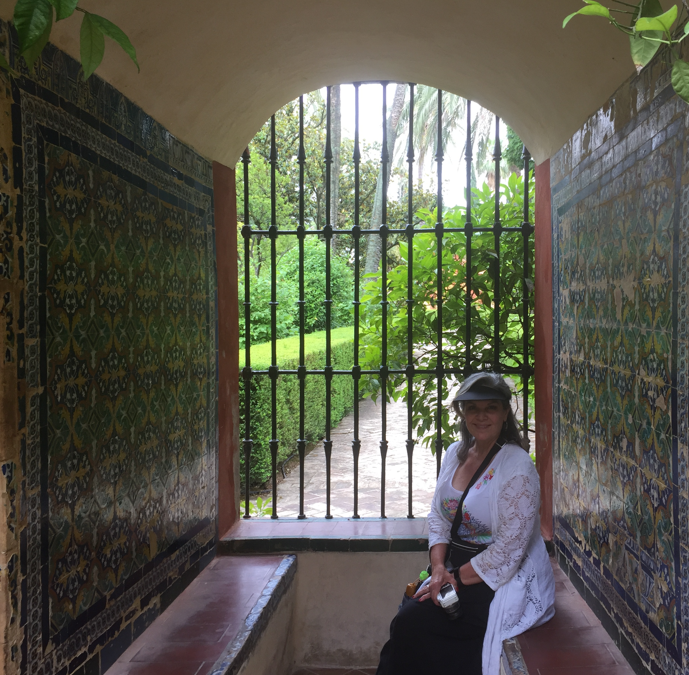Sevilla (Part II)
Right next to the Seville cathedral is another UNESCO World Heritage Site, that of the Alcazar of Seville, equally interesting and staggeringly beautiful.
The palace is a preeminent example of Mudéjar style in the Iberian Peninsula, combining Romanesque, Gothic, and Renaissance structural elements.
It is interesting to note that the upper stories of the Alcázar are still occupied by the Spanish royal family when they visit Seville, and, as such, is considered a royal palace. It holds the record as the oldest occupied royal residence in Europe.
It was built for the Christian king Peter of Castile and was built by the Christians on the site of an Abbadid Muslim alcazar, or residential fortress. The fortress was destroyed after the Christian conquest of Seville in 1248.
Entrance to the Alcazar
The entrance to the Alcazar, the Puerta de Leon (Lion’s Gate), is very unassuming, with a tall gated wall and tower that welcomes the visitor into multiple courtyards of fruit trees, beautiful flowering plants and guided pathways to the many structural buildings inside.
The Alcazar’s many rooms were intricately formed with exquisitely decorated plasterwork, tiling and coffered ceilings, which combine perfectly with the magnificent gardens and use of water to create an unforgettable impression. One sees many trickling fountains throughout the grounds. It also aides in keeping the courtyards and patios cool during the summer months when the temperatures can reach 110 degrees for many days at a time.
A Cool Spot in the Alcazar Gardens
The Alcazar boasts of 13 distinct gardens where the visitor can wander throughout soaking in the sights and taking pictures. Take your time as you walk through the gardens with the intent of searching out the most peaceful spot on the grounds.
My favorite was a small arched alcove with benched seats at the back left side of the Jardin de las Flores (Garden of the Flowers) where my wife sat to take in the view and to capture the special moment for a watercolor that she created upon returning to the States.
Interior Patio
Three Different Gardens
Guided tours of the site run every 30 minutes, and unguided tours with audio in various languages are run continuously. There is a security entrance and the tourist is required to place all their belongings through a metal detector for inspection.
Touring this historic site should be done slowly. Take your time as you will be rewarded with many memories that will stay with you for many years to come.




